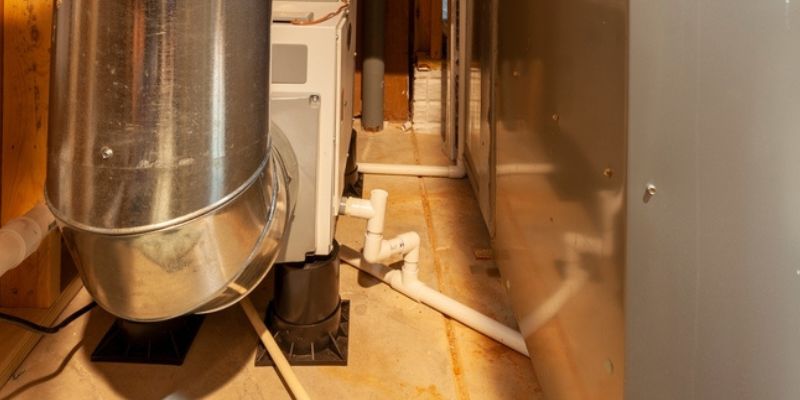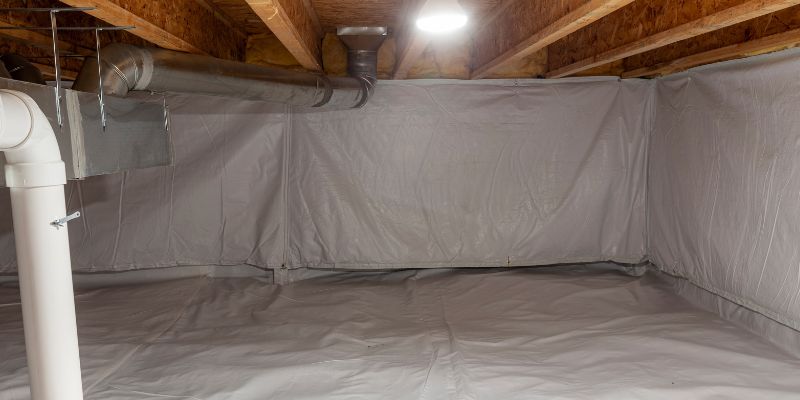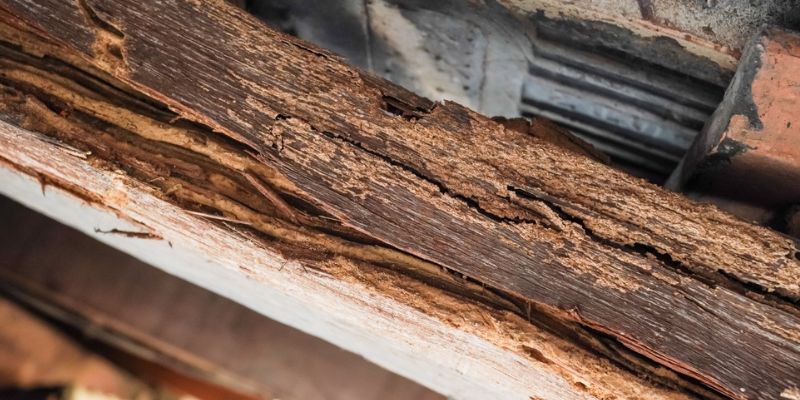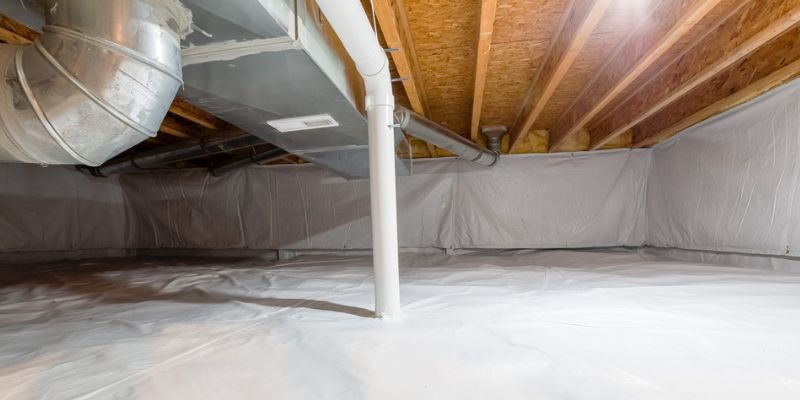Living in the Lowcountry means dealing with high humidity, salty air, and frequent storms, which turn your crawlspace into a moisture magnet. At Crawlspace ER, we’ve seen how a properly installed crawlspace dehumidifier makes a huge difference in preventing mold, odors, and energy loss across Lowcountry homes.
A dehumidifier in crawlspace environments can prevent costly damage, improve indoor air quality, and increase energy efficiency. If you’re dealing with high humidity levels, musty smells, or signs of mold and mildew, you’re not alone. Many homeowners face similar challenges, especially in damp environments. But the question remains, do you really need a crawlspace dehumidifier?
Let’s explore why dehumidifiers are often essential for maintaining a dry, healthy, and efficient home in the Lowcountry.
The Problem with Crawlspace Moisture
Crawlspace moisture is more than an inconvenience. It’s one of the leading causes of mold growth, wood rot, and foundation issues. Moisture can enter the crawlspace through open vents, cracks, or the dirt floor, leading to condensation and long-term damage.
Excess moisture often causes:
- Visible mold growth on insulation and beams
- Damp conditions attract pest infestations
- Poor indoor air quality
- Increased energy bills due to compromised insulation
- Structural issues in flooring and support beams
Without proper control, moisture infiltration will only worsen over time.

How a Crawlspace Dehumidifier Works
A crawlspace dehumidifier is designed to remove the excess humidity from the air in enclosed, low-clearance environments. These devices pull humid air through a fan, condense the water vapor, and discharge dry air into the space. A pump or drainage system is used to remove the collected water.
Proper dehumidifiers for crawlspaces:
- Maintain optimal humidity levels (typically between 45–55%)
- Prevent mold and mildew
- Improve energy efficiency
- Reduce moisture infiltration
- Help protect wood, insulation, and the home’s foundation
Do I Need a Dehumidifier in My Crawlspace?
If you’re wondering, “Do I need a dehumidifier in my crawlspace?”, the answer depends on several factors. Lowcountry, South Carolina’s climate, for example, is hot and humid, which means moisture is a frequent issue for homeowners.
You may need one if:
- Your crawlspace smells musty
- You see mold growth
- There’s standing water or condensation
- Your humidity levels are above 60%
- You’ve already encapsulated your crawlspace and need extra humidity control
Choosing the Right Dehumidifier
Choosing the right dehumidifier means considering the amount of moisture present, the size of your crawlspace, and the level of air circulation. A size dehumidifier calculator can help estimate the capacity needed in daily pints.
For best results, look for features like:
- High efficiency for damp environments
- Built-in pump for drainage
- Automatic humidity sensors
- Washable filters for easier maintenance
Keep in mind that a basement dehumidifier may not be suitable. Crawlspace units are designed for tight, enclosed areas and often work better in these unique conditions.

The Role of Crawlspace Encapsulation
Crawlspace encapsulation goes hand-in-hand with using a crawlspace dehumidifier. Encapsulation seals the area with a vapor barrier and insulation, helping block water, moisture, and outside air from entering the space.
When combined with dehumidifiers, encapsulation ensures:
- Long-term moisture and humidity control
- Reduced risk of mold and mildew
- Increased comfort and efficiency throughout the house
- Protection against foundation deterioration
- Encapsulation without dehumidification can still lead to problems if humidity becomes trapped.
Dehumidifier vs. Ventilation: What’s Better?
While crawlspace ventilation was once recommended, it often brings humid air inside, making problems worse. Venting can cause condensation, support mold growth, and lead to higher moisture levels.
Unlike passive ventilation, a dehumidifier offers consistent control over the environment, which depends on outdoor conditions.

Signs You Need a Dehumidifier Now
Not sure when to act? These are common indicators that it’s time to consider putting a dehumidifier in crawlspace areas:
- Musty or damp smells throughout your home
- Pest infestations in or around the crawlspace
- Sagging or creaking floors
- Condensation on pipes or HVAC ducts
- A failed vapor barrier or no encapsulation in place
Taking early action prevents expensive repairs and preserves your home’s value.
Benefits of Professional Installation
Professional installation ensures your crawlspace dehumidifier is correctly sized, placed, and drained. Experts can also check for proper drainage, encapsulation quality, and relative humidity levels, setting your system up for long-term success.
You’ll get peace of mind knowing:
- The unit fits your crawlspace size
- Drainage systems are in place
- No humid air leaks are left unsealed
- The unit is optimized for energy efficiency
Improve Your Home’s Health from the Ground Up with Crawlspace ER
Installing a dehumidifier in crawlspace areas is one of the most effective ways to combat moisture, control humidity, and avoid long-term damage to your home. Whether you’re dealing with high humidity levels, visible mold growth, or simply want to improve indoor air quality, the right system can make all the difference.
When paired with crawlspace encapsulation, proper drainage, and sealing, a crawlspace dehumidifier creates a dry, healthy foundation for your home. Protect your investment and enjoy a cleaner, safer living environment.
Don’t let the Lowcountry’s climate compromise your home. Crawlspace ER has protected dozens of homes by installing and servicing dehumidifiers built for our conditions. Call 843-543-2200 today for a free crawlspace inspection and find out if a dehumidifier is right for you.


Recent Comments